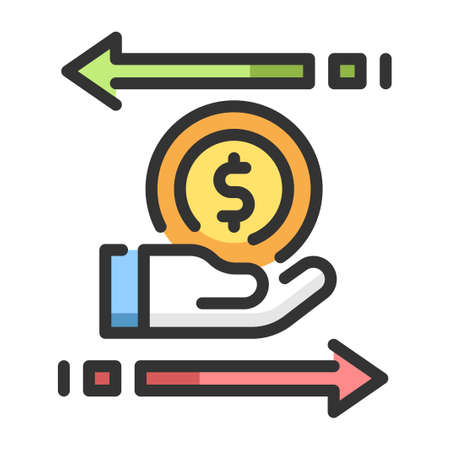Understanding U.S. Consumer Needs and Behavior
Before you can build a scalable tech product for the U.S. consumer market, it’s crucial to get inside the mind of your target audience. Americans are unique in their habits, preferences, and expectations, so taking time to research and analyze these factors will set a strong foundation for your product.
Why Understanding Consumer Behavior Matters
The U.S. market is diverse and fast-changing. What works in other countries might not work here. To achieve product-market fit, you need to know:
- What problems are American consumers trying to solve?
- How do they use technology in daily life?
- What are their spending habits and trust factors?
- Which trends are shaping their preferences?
Key Strategies for Researching U.S. Consumers
Here are some practical strategies to help you understand your audience better:
| Strategy | Description | Example Tools/Methods |
|---|---|---|
| Surveys & Questionnaires | Directly ask potential users about their needs and habits. | Google Forms, SurveyMonkey |
| User Interviews | Have one-on-one conversations for deeper insights. | Zoom calls, in-person meetups |
| Market Data Analysis | Study reports and statistics on consumer trends. | Pew Research Center, Statista |
| Competitor Analysis | Observe how similar products perform and what users like/dislike. | App store reviews, social media listening tools |
| User Testing & Feedback Loops | Create prototypes and gather feedback early and often. | UserTesting.com, beta programs |
Cultural Habits and Preferences to Keep in Mind
- Convenience is King: Americans value speed, ease-of-use, and seamless experiences.
- Diversity Matters: The U.S. population is multicultural. Consider localization—language options, holidays, values—in your design.
- Privacy Concerns: Many Americans care deeply about data privacy. Be transparent about how you collect and use data.
- Loyalty Programs: Reward systems (points, discounts) are popular ways to retain users.
- Mobile-First: Most consumers prefer mobile devices over desktop for shopping and social interactions.
Tapping Into Trends and Expectations
The U.S. market moves quickly with trends like sustainability, personalization, and on-demand services. Staying updated with pop culture, tech news, and consumer reports can help you spot what matters most right now.
2. Designing for Scalability from the Start
Why Scalability Matters in the U.S. Consumer Market
The U.S. market is known for its size and fast-changing trends. If your tech product can’t handle sudden spikes in users or rapid feature updates, you’ll risk losing customers to competitors. Planning for scalability from day one ensures your product can grow smoothly as your user base expands.
Key Elements of a Scalable Architecture
| Component | What It Does | Why It’s Important |
|---|---|---|
| Cloud Infrastructure | Hosts your app or service online, adjusts resources as needed | Allows quick scaling without big upfront costs or delays |
| Microservices | Breaks features into independent services | Makes it easy to update, fix, or scale parts of your product separately |
| APIs | Connects different parts of your system and with third parties | Keeps your product flexible and ready for integrations or partnerships |
| Automated Testing & Deployment | Checks code and releases updates automatically | Lowers the risk of bugs and helps you launch new features faster |
Best Practices for Future-Proof Growth
- Build on Cloud Platforms: Use services like AWS, Google Cloud, or Microsoft Azure so you can scale up (or down) instantly as demand changes.
- Design with Modularity: Create your app in smaller, independent pieces so teams can work on updates without affecting the whole system.
- Set Up Continuous Integration/Continuous Delivery (CI/CD): Automate testing and deployment to keep updates smooth and reliable.
- Monitor Performance: Use tools that track speed and errors, so you catch issues before they affect users.
- Plan for Spikes: Expect sudden jumps in traffic during promotions or news coverage—make sure your system can handle them without crashing.
User Experience at Scale: Don’t Forget the Customer!
A scalable backend is only half the story. The front-end experience should stay smooth even as thousands—or millions—of users come onboard. Optimize page load times, minimize downtime during updates, and keep communication clear if there’s ever a hiccup.

3. Navigating Regulatory and Compliance Requirements
When building a scalable tech product for the U.S. consumer market, understanding and meeting regulatory and compliance standards is crucial. Failing to do so can lead to costly delays, fines, or even being shut out of the market. Here’s what you need to know to keep your tech product compliant from day one.
Key Legal Considerations
The U.S. has specific laws that impact consumer tech products. These can vary by state, but there are several federal regulations you’ll need to follow:
| Area | Relevant Law or Regulation | What It Means for You |
|---|---|---|
| Consumer Protection | Federal Trade Commission Act (FTC) | No deceptive advertising, clear disclosures, fair business practices |
| Data Privacy | California Consumer Privacy Act (CCPA), Children’s Online Privacy Protection Act (COPPA) | Protect user data, offer privacy controls, get parental consent for kids under 13 |
| Accessibility | Americans with Disabilities Act (ADA), Section 508 | Your website/app must be usable by people with disabilities (think screen readers, captions) |
| Data Security | State-level Data Breach Laws (e.g., New York SHIELD Act) | You must notify users if their personal data is breached; strong security measures required |
Privacy Standards: Protecting User Data
The U.S. takes consumer privacy seriously, especially in states like California. Make sure your product:
- Has a clear privacy policy explaining what data you collect and how it’s used
- Makes it easy for users to opt out or request deletion of their data
- Obtains parental consent before collecting information from children under 13 (COPPA compliance)
- Keeps up with changing state laws—privacy rules are evolving fast!
Accessibility Matters: Designing for Everyone
Your tech product should be accessible to all users—including those with disabilities. This not only helps more people use your product, but also keeps you compliant with ADA and Section 508 rules. Here are some simple steps:
- Add alt text to images so screen readers can describe them
- Provide captions for video and audio content
- Ensure color contrast is high enough for visually impaired users
- Make navigation possible with a keyboard (not just a mouse)
Pro Tip: Regular Compliance Checks
Laws and best practices change frequently in the U.S. Schedule regular reviews of your legal, privacy, and accessibility standards. Consulting a legal expert familiar with tech startups can help you stay ahead of any issues.
4. Launching and Iterating with the U.S. Audience
Go-to-Market Strategy: Making a Strong First Impression
When entering the U.S. consumer market, your go-to-market (GTM) strategy is everything. Americans are used to seeing polished products and creative launches, so it’s important to stand out from day one. Here are some proven best practices for launching your tech product in the United States:
| Best Practice | Description | Example |
|---|---|---|
| Soft Launch or Beta Testing | Release your product to a small group of users first to gather feedback and fix issues before a full launch. | Invite 500 early adopters from major U.S. cities for beta access. |
| Influencer Partnerships | Collaborate with American influencers who align with your brand to reach new audiences quickly. | Partner with tech YouTubers or TikTok creators for reviews and demos. |
| Localized Messaging | Tailor your marketing language and visuals to reflect American culture and values. | Use casual, relatable slogans like “Making Life Easier, One Tap at a Time.” |
| Multi-Channel Approach | Promote across channels such as social media, email, paid ads, and community events for maximum reach. | Launch campaigns on Instagram, Facebook, Google Ads, and local meetups. |
Feedback Collection: Listening to Real Users
The U.S. market values customer-centric brands. Collecting honest feedback is key to improving your product and building loyalty. Here are practical ways to gather user insights:
- User Surveys: Send short, mobile-friendly surveys after sign-up or first use to capture initial impressions.
- In-App Feedback Tools: Allow users to report bugs or suggest features directly within your app.
- User Interviews: Schedule virtual calls with power users or dissatisfied customers to understand their experiences deeply.
- Online Reviews Monitoring: Track feedback on platforms like the App Store, Google Play, Reddit, and Trustpilot to spot trends fast.
- A/B Testing: Try different versions of features or designs to see what resonates most with American users.
Sample Feedback Channels Table
| Channel | Main Benefit |
|---|---|
| Email Surveys | Diverse feedback from a broad audience quickly |
| App Store Reviews | Public sentiment that impacts new user trust |
| User Interviews (Zoom) | In-depth understanding of pain points and needs |
| Social Media Polls/DMs | Candid opinions from engaged followers in real-time |
Agile Product Improvement: Move Fast and Stay Flexible
The American tech landscape changes fast—so should your product. Agile methods help you adapt quickly based on feedback. Here’s how you can keep up:
Sprint Planning and Rapid Releases
- Sprint Cycles: Work in short cycles (e.g., 2 weeks) focused on specific goals or user requests.
- MVP Updates: Regularly release small updates instead of waiting for big overhauls—this keeps users engaged and shows progress.
- User-Centric Prioritization: Use data from feedback channels to decide which features or fixes come next.
- Cultural Relevance: Adapt features based on U.S.-specific trends—think about local holidays, sports seasons, or pop culture events when planning updates.
User Engagement: Building Loyal Fans in America
The U.S. market rewards companies that listen and respond quickly. Show users you care by communicating openly about updates, celebrating milestones together (like hitting 10k downloads), and offering great support. Remember: Americans love brands that feel human, approachable, and genuinely helpful—make sure your team reflects that every step of the way!
5. Building Strategic Partnerships and a Support Ecosystem
When you’re launching a scalable tech product in the U.S. consumer market, going at it alone can slow your progress and limit your reach. Instead, working with the right local partners, networks, and support services can make a huge difference. Here’s how you can leverage these relationships to build credibility and accelerate your growth.
Why Strategic Partnerships Matter
The U.S. market values trust and familiarity. Teaming up with established local companies or influencers helps you gain instant credibility. Partners can introduce you to new customer bases, share valuable market insights, and even help you navigate tricky regulations.
Types of Local Partnerships
| Partnership Type | Benefits | Examples |
|---|---|---|
| Distribution Partners | Expand reach quickly through existing channels | Retail chains, e-commerce platforms |
| Marketing Collaborations | Boost brand awareness with shared campaigns | Local influencers, social media personalities |
| Technology Integrators | Add features or compatibility for U.S. consumers | SaaS providers, API partners |
| Service Providers | Smooth operations and compliance in the U.S. | Legal firms, payment processors, logistics companies |
Tapping Into Local Networks
Business networks and communities are powerful in the U.S. Look for startup accelerators, industry groups, or city-specific tech meetups. These networks not only provide mentorship but also open doors to investors and early adopters who can test and promote your product.
Popular Support Networks in the U.S.
- Startup Accelerators: Y Combinator, Techstars, 500 Startups
- Industry Groups: Consumer Technology Association (CTA), National Retail Federation (NRF)
- Coworking Spaces: WeWork Labs, Industrious, Galvanize (often host networking events)
- Chambers of Commerce: Local chapters often connect international founders to resources and mentors.
Selecting the Right Support Services
The U.S. has a wide range of specialized support services for tech startups. Choosing the right ones ensures smoother operations as you scale.
| Support Service | Main Function | U.S.-Based Example Providers |
|---|---|---|
| Legal & Compliance Advisors | Navigating regulations, IP protection, contracts | Pillsbury Law, Wilson Sonsini Goodrich & Rosati |
| Payment Processing Solutions | Accepting credit cards and digital payments easily | Stripe, Square, PayPal |
| User Support & Customer Service Platforms | Managing customer inquiries efficiently at scale | Zendesk, Freshdesk, Intercom |
| Logistics & Fulfillment Partners | Simplify shipping and returns for U.S. consumers | ShipBob, Amazon FBA, FedEx Fulfillment |
The Power of Community Engagement
A final tip: Engage with local communities—both online and offline. Attend events, sponsor hackathons, or participate in charity drives that align with your brand values. This grassroots approach makes your product feel more relatable and trustworthy to American consumers.


